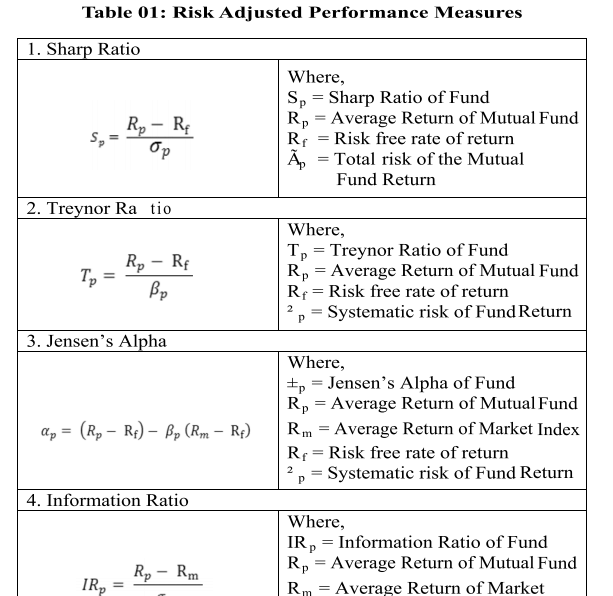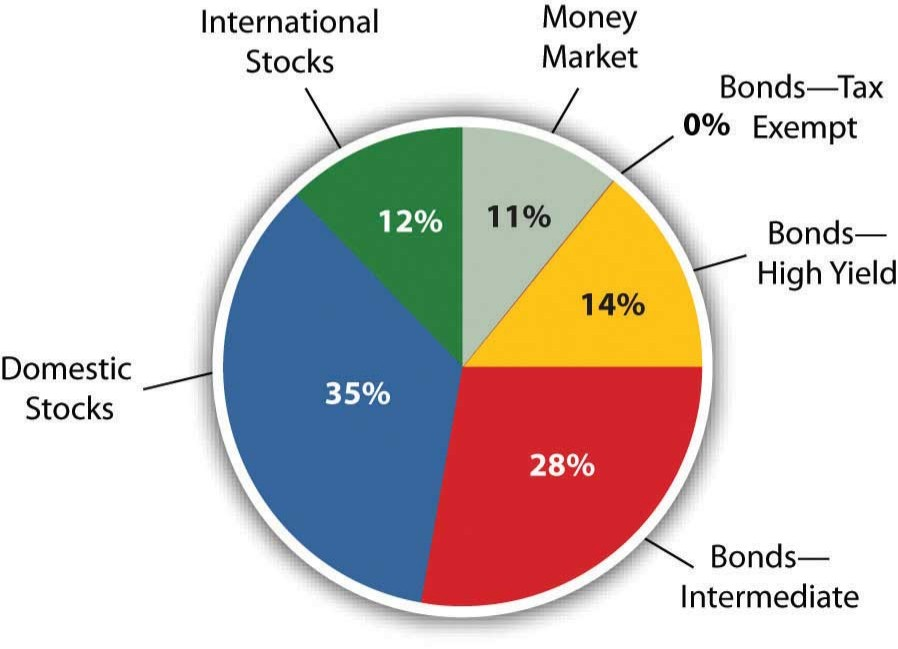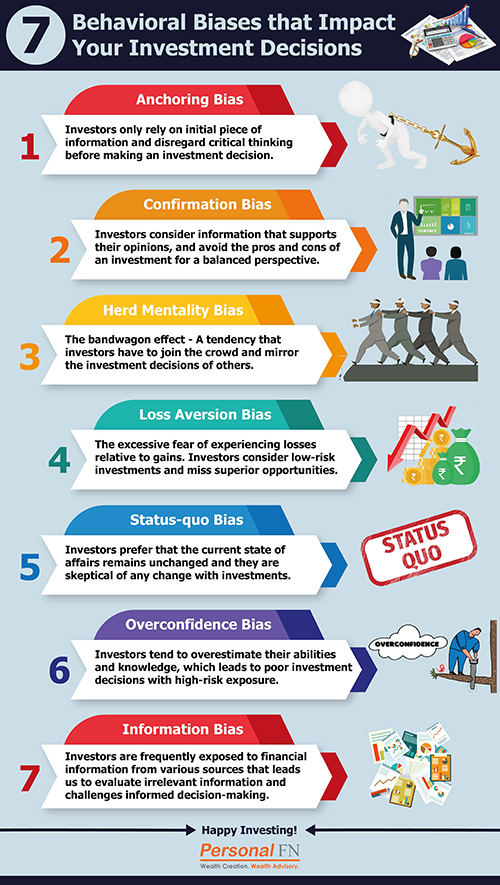Παγκόσμια: Ανταλλαγή Κινδύνου-Απόδοσης
Στόχοι Μαθήματος:
- Understand the Risk-Return Tradeoff: Learn how higher returns often come with higher risk, and why finding the right balance between risk and reward is crucial for building a successful investment portfolio.
- Learn to Measure Risk-Adjusted Returns: Gain the ability to assess investment performance using tools like the Sharpe Ratio, Treynor Ratio, και Jensen’s Alpha, helping you compare returns while factoring in the level of risk taken.
- Apply Risk Management Strategies: Discover how to use methods like diversification, asset allocation, hedging, και rebalancing to control risk and maintain a stable long-term investment approach.
- Recognize Behavioral Biases in Investing: Understand how emotions and mental shortcuts, such as αποστροφή για την απώλεια και herding behavior, can lead to poor investment decisions. You’ll learn how to stay focused on your strategy, even during uncertain times.
A. Risk-Return Tradeoff
ο risk-return tradeoff is a fundamental concept in investing, stating that higher potential returns are typically associated with higher risk. Investors must balance their desire for higher returns with their tolerance for risk, understanding that no investment is free from risk.
- High-Risk, High-Return: Investments in growth stocks, emerging markets, or speculative assets offer the potential for significant returns but come with increased volatility and a higher chance of loss. Investors seeking high returns must be prepared to endure more market fluctuations.
- Low-Risk, Low-Return: Conversely, investments in δεσμούς, money market funds, ή blue-chip stocks generally offer more stability but lower returns. These are typically favored by conservative investors or those nearing retirement who prioritize capital preservation over high returns.
Understanding the risk-return tradeoff allows investors to construct portfolios that align with their investment goals and risk tolerance, balancing growth opportunities with the need for security.
Εικόνα: The Relationship Between Risk and Reward
Περιγραφή:
This graph represents the risk-reward spectrum for various investment categories, ranging from μετρητά να equity funds. Το x-axis denotes κίνδυνος, ενώ το y-axis indicates πιθανή ανταμοιβή. Investments on the left side, like cash and short-term bonds, exhibit lower risk and reward, emphasizing ρευστότητα και safety. In contrast, investments on the right side, like equity and high-yield bond funds, entail higher risk but offer greater long-term growth potential. Each investment type is linked to specific risks: interest rate risk for bonds, market risk for equities, and default risk for high-yield bonds.
Βασικά συμπεράσματα:
- Cash: Lowest risk, focusing on liquidity but limited growth potential.
- Short-Term Bond Funds: Moderate risk with enhanced yield, subject to interest rate fluctuations.
- Core Bond Funds: Offer longer-term income with both interest rate and credit risks.
- High Yield Bond Funds: Provide greater yields, associated with default risk.
- Equity Funds: Highest potential for long-term growth, linked to market volatility.
Εφαρμογή πληροφοριών:
Investors can use this risk-reward spectrum to match their risk tolerance with suitable asset classes. Συντηρητικοί επενδυτές may favor lower-risk options like μετρητά ή δεσμούς, ενώ aggressive investors might opt for high-yield bonds ή equities for higher growth. Understanding this spectrum aids in διαφοροποίηση χαρτοφυλακίου και investment strategy planning, helping investors achieve optimal returns aligned with their risk appetite.
B. Risk-Adjusted Returns
Risk-adjusted returns provide a more accurate assessment of an investment’s performance by taking into account the level of risk involved. Simply looking at raw returns can be misleading if the investment carries a higher level of risk. Key metrics used to evaluate risk-adjusted returns include the Αναλογία Sharpe, Treynor Ratio, και Jensen’s Alpha:
- Αναλογία Sharpe: This measures an investment’s excess return per unit of risk (volatility). A higher Sharpe Ratio indicates better risk-adjusted performance. It helps investors compare investments with different risk levels to see which offers more reward for the risk taken.
- Treynor Ratio: Similar to the Sharpe Ratio but uses Βήτα (market risk) instead of standard deviation to evaluate the risk. It measures how much return an investment generates for each unit of market risk taken.
- Jensen’s Alpha: Alpha measures the excess return of an investment relative to its risk, specifically market risk as measured by Beta. Positive Alpha means the investment outperformed the market after adjusting for risk, while negative Alpha indicates underperformance.
These metrics help investors assess whether the returns they are receiving justify the risks they are taking, making it easier to build a portfolio that meets their risk tolerance and performance goals.
Εικόνα: Risk-Adjusted Performance Measures
Περιγραφή:
This figure presents four key metrics used to assess the risk-adjusted performance of mutual funds and other investments: Sharp Ratio, Treynor Ratio, Jensen’s Alpha, και Information Ratio. Each metric is defined by a specific formula that compares fund returns, risk-free returns, and other variables related to total risk ή systematic risk. The Sharpe Ratio evaluates performance relative to total risk, while the Treynor Ratio and Jensen’s Alpha measure performance considering systematic risk. The Information Ratio measures excess returns over a benchmark adjusted for tracking error.
Βασικά συμπεράσματα:
- Sharpe Ratio: Measures returns relative to total risk, useful for evaluating risk efficiency.
- Treynor Ratio: Focuses on systematic risk, providing insights into performance relative to market risk.
- Jensen’s Alpha: Indicates whether a fund has outperformed or underperformed relative to expected returns.
- Information Ratio: Compares a fund’s excess return over a benchmark, adjusted for tracking error.
Εφαρμογή πληροφοριών:
These risk-adjusted performance measures are essential for investors to evaluate the efficiency of fund returns relative to risk. By understanding these metrics, investors can compare funds, select those that best match their ανοχή ρίσκου, and optimize their portfolios for risk-adjusted returns. These measures help in making informed investment decisions and achieving better διαχείριση κινδύνου in diverse market conditions.
C. Risk Management Strategies
Effective risk management is key to building a portfolio that can weather market volatility and achieve long-term financial goals. Common strategies include:
- Διαποικίληση: Spreading investments across various asset classes, sectors, and geographies helps reduce the impact of poor performance in any one area. Diversification minimizes risk by ensuring that a downturn in one asset class or market is offset by gains in others.
- Asset Allocation: Asset allocation is the process of dividing a portfolio among different asset categories, such as αποθέματα, δεσμούς, και μετρητά. The right asset allocation depends on an investor’s risk tolerance, goals, and time horizon. More aggressive investors may allocate a larger portion to stocks, while conservative investors may prioritize bonds and cash.
- Αντιστάθμιση: Αντιστάθμιση involves using financial instruments like options, futures, and derivatives to reduce the risk of adverse price movements. For example, an investor holding a portfolio of U.S. stocks may use currency hedging to protect against exchange rate fluctuations if they are based in Europe.
- Εντολές Stop-Loss: A εντολή stop-loss is a pre-set instruction to sell an asset if its price falls below a certain threshold. This helps limit potential losses in a volatile market and protect the overall portfolio from significant declines.
- Επανεξισορρόπηση: Over time, market movements may cause the proportions of assets in a portfolio to drift away from the desired allocation. Επανεξισορρόπηση involves adjusting the portfolio periodically to restore the original asset allocation, ensuring that risk levels remain aligned with the investor’s goals.
Εικόνα: Portfolio Allocation Breakdown
Περιγραφή:
This pie chart displays the allocation of a diversified investment portfolio across different asset classes. The portfolio is divided into six categories: Εγχώριες Μετοχές (35%), Bonds—Intermediate (28%), Bonds—High Yield (14%), International Stocks (12%), Money Market (11%), και Bonds—Tax Exempt (0%). The largest portion of the portfolio is allocated to Domestic Stocks, followed by Ενδιάμεσα Ομόλογα. The chart highlights a balanced approach, aiming for growth while also incorporating fixed-income assets and international exposure.
Βασικά συμπεράσματα:
- Domestic Stocks hold the largest allocation at 35%, indicating a focus on growth through local equities.
- Ενδιάμεσα Ομόλογα make up 28% of the portfolio, offering steady income and reducing risk.
- High Yield Bonds (14%) add income potential but come with higher risk compared to other bonds.
- International Stocks (12%) provide global diversification, helping mitigate domestic market risks.
- Money Market (11%) adds liquidity and stability to the portfolio.
- Tax-Exempt Bonds have no allocation in this portfolio, emphasizing taxable income strategies.
Εφαρμογή πληροφοριών:
Αυτό κατανομή χαρτοφυλακίου strategy can serve as a benchmark for investors seeking a diversified approach that balances growth and income. By studying this allocation, investors can understand the importance of diversifying across asset classes to manage risk, achieve consistent returns, and reduce the impact of market volatility. This example emphasizes how a mix of equities and fixed income can be tailored to align with individual investment goals and risk tolerance.
D. Behavioral Aspects of Risk Management
Investing is not just about numbers; behavioral finance shows that emotions and psychological biases can have a significant impact on how investors perceive and manage risk. Understanding these biases can help investors make better decisions:
- Αποστροφή για την απώλεια: Many investors are more sensitive to losses than gains, often leading them to avoid risk altogether or sell winning investments too early. Recognizing this bias can help investors maintain a long-term perspective and avoid emotionally-driven decisions.
- Overconfidence: Some investors believe they can consistently beat the market, leading to excessive trading and taking on more risk than is necessary. Staying realistic about market performance and focusing on long-term goals helps manage this bias.
- Herding Behavior: Investors often follow the crowd, buying into popular stocks or sectors without fully understanding the risks involved. This can lead to bubbles or market crashes when sentiment shifts. Managing this bias involves sticking to a well-defined strategy and avoiding emotional reactions to market trends.
- Anchoring: Investors may fixate on irrelevant information, such as the purchase price of an asset, and make decisions based on that instead of current market conditions. Letting go of these psychological anchors helps in making objective decisions that align with the portfolio’s risk management strategy.
Understanding and mitigating these behavioral biases allows investors to stick to their risk management strategies and avoid making costly mistakes during times of market turbulence.
Εικόνα: 7 Behavioral Biases that Impact Your Investment Decisions
Περιγραφή:
This infographic illustrates seven common behavioral biases that impact investment decisions. Each bias is briefly explained with a description of how it can influence an investor’s mindset and decisions. The biases include Αγκυροβόληση με προκατάληψη, Προκατάληψη επιβεβαίωσης, Herd Mentality Bias, Loss Aversion Bias, Status-quo Bias, Προκατάληψη υπερβολικής αυτοπεποίθησης, και Information Bias. It provides a clear understanding of how these psychological tendencies can affect judgment and decision-making in investments.
Βασικά συμπεράσματα:
- Αγκυροβόληση με προκατάληψη causes investors to focus on initial information, affecting objective decision-making.
- Προκατάληψη επιβεβαίωσης leads to the selection of information that supports pre-existing beliefs, disregarding opposing data.
- Herd Mentality Bias encourages following others’ investment choices, potentially ignoring personal analysis.
- Loss Aversion Bias results in risk-averse behavior, potentially limiting growth opportunities.
- Status-quo Bias keeps investors from adapting to market changes, potentially missing out on better opportunities.
- Προκατάληψη υπερβολικής αυτοπεποίθησης may lead to risky decisions due to overestimated knowledge or abilities.
Εφαρμογή πληροφοριών:
Κατανόηση αυτών behavioral biases can help investors make more rational, informed decisions by becoming aware of psychological pitfalls. By identifying and addressing these biases, investors can develop more disciplined investment strategies, make better αξιολογήσεις κινδύνου, and improve διαχείριση χαρτοφυλακίου skills.
συμπέρασμα
Effective portfolio risk management is about more than just choosing the right investments; it requires balancing the risk-return tradeoff, understanding risk-adjusted returns, and implementing proven στρατηγικές διαχείρισης κινδύνου. Investors can protect themselves from excessive risk by diversifying, managing asset allocations, and using hedging techniques. Additionally, recognizing and overcoming behavioral biases helps investors make rational decisions in both rising and falling markets. By applying these principles, investors can build resilient portfolios that align with their financial goals while controlling the level of risk they are willing to accept.
Βασικές πληροφορίες μαθήματος:
- The risk-return tradeoff is essential to investing, showing that higher potential returns usually involve greater risk. For example, growth stocks and emerging markets offer more upside but also come with more volatility, while bonds and cash offer stability with lower returns.
- Risk-adjusted returns provide a clearer view of performance, using tools like the Sharpe Ratio, Treynor Ratio, και Jensen’s Alpha. These help you compare different investments fairly by showing how much reward is earned for each unit of risk taken.
- Effective risk management strategies help control portfolio risk. These include diversification across assets, smart asset allocation based on risk tolerance, and tools like stop-loss orders και hedging to protect against big losses.
- Portfolio rebalancing keeps investments aligned with goals. Over time, market changes can shift your portfolio’s balance. Rebalancing restores your original strategy, helping manage risk and ensure long-term stability.
- Behavioral biases affect how people manage risk. Loss aversion, overconfidence, anchoring, και herding behavior can cause emotional decisions, like selling too early or chasing market trends. Recognizing these habits helps you stick to your plan.
- Understanding your own behavior improves decision-making. By being aware of psychological traps, investors can become more disciplined and build better long-term strategies that manage both emotions and market risks.
Τελική δήλωση
A strong understanding of risk and return allows investors to make smart choices that match their goals, personality, and market conditions. This section provides the tools to manage both emotional and financial risks in real-world investing.






